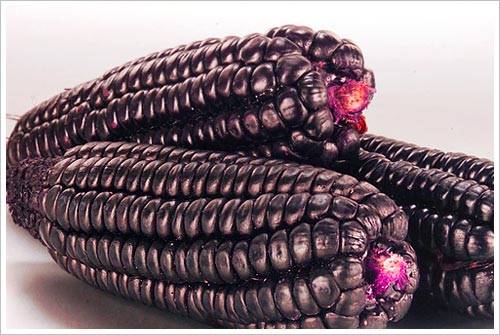 Anthocyanins in purple corn inhibits diabetic nephropathy (DN) says the study published in the online edition of the American Journal of Physiology -- Renal Physiology, published by the American Physiological Society. Anthocyanins in purple corn inhibits diabetic nephropathy (DN) says the study published in the online edition of the American Journal of Physiology -- Renal Physiology, published by the American Physiological Society.
 Researcher Min-Kyung Kang and colleagues performed a two-part study, an in vitro experiment investigating the effects of PCA on human endothelial cells cultured under hyperglycemic kidney conditions and an in vivo study that investigated the effects of purple corn anthocyanins (PCA) on kidney tissue in diabetic mice. In the in vitro experiment, cultured cells were exposed to 1-20 µg/ml of PCA for six hours (control cells were not exposed), then assessed for level of monocyte-endothelial cell adhesion, a major factor in the development of diabetic glomerulosclerosis. In the in vivo experiment, diabetic and control mice were dosed with PCA for eight weeks, then changes in kidney tissue were assessed and immune histological analyses were performed. Researcher Min-Kyung Kang and colleagues performed a two-part study, an in vitro experiment investigating the effects of PCA on human endothelial cells cultured under hyperglycemic kidney conditions and an in vivo study that investigated the effects of purple corn anthocyanins (PCA) on kidney tissue in diabetic mice. In the in vitro experiment, cultured cells were exposed to 1-20 µg/ml of PCA for six hours (control cells were not exposed), then assessed for level of monocyte-endothelial cell adhesion, a major factor in the development of diabetic glomerulosclerosis. In the in vivo experiment, diabetic and control mice were dosed with PCA for eight weeks, then changes in kidney tissue were assessed and immune histological analyses were performed.
 Their findings suggest that PCA inhibits multiple pathways involved in the development of DN, which may help in developing therapies aimed at type 2 diabetes and kidney disease. The research further suggests that reno protection by PCA against mesangial activation may be specific therapies targeting diabetes-associated diabetic glomerulosclerosis and renal inflammation."PCA may be a potential renoprotective agent treating diabetes-associated glomerulosclerosis," wrote the researchers. Their findings suggest that PCA inhibits multiple pathways involved in the development of DN, which may help in developing therapies aimed at type 2 diabetes and kidney disease. The research further suggests that reno protection by PCA against mesangial activation may be specific therapies targeting diabetes-associated diabetic glomerulosclerosis and renal inflammation."PCA may be a potential renoprotective agent treating diabetes-associated glomerulosclerosis," wrote the researchers.
|

